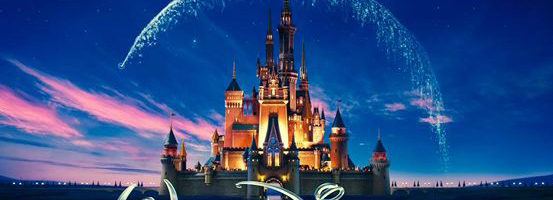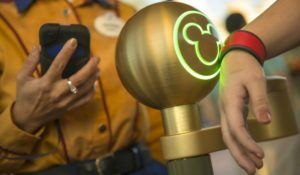Disney – Hakuna Matata! Digital ain’t no passing craze

Do the magical storytellers have a happily ever after waiting for them?
We have all grown up to finding comfort in Disney’s magical animations on television, comics, books, cinema and its theme parks. Started in 1923, Disney is one of the largest kids and family entertainers of all time that needs no introduction. But what is entertainment for millennials today? They are living in a multi-screen multi-tasking world with short attention spans.
What does the digital age mean for Disney:
- There is wide diversity in screen media use: In any given day, 34% of tweens and 23% of teens spend 2 hours or less with screen media, while 11% of tweens and 26% of teens spend more than 8 hours with screens (1)
- On average among teens 39% of digital screen time (computers, tablets, and smartphones) is devoted to passive consumption (watching, listening, or reading), 25% to interactive content (playing games, browsing the web), 26% to communication (social media, video-chatting), and only 3% to content creation (writing, coding, or making digital art or music). (2)
- Social media is an integral part of most teens’ lives (45% use “every day”), but it lags behind use of music (66%) and TV (58%). (3)
Media consumption habits are definitely changing. With 3D, Augmented Reality and Virtual reality, the consumer today is looking for more digitally immersive experiences. In this time of meteoric change, it is interesting to see how Disney is transforming its business and operational strategy to create ‘magic’.
Disney’s approach:
“We had been viewing changes in technology as more threat than opportunity. I reversed that, because I really believed the company should look at technology as a friend. It had been part of the company originally: Walt Disney was a big believer in technology.” – Bob Iger CEO, Disney [4]
Disney has embraced technological innovation into its overall strategy. It is using digital to engage, entertain and interact with consumers every day across its theme parks, studio entertainment, interactive media platforms and physical store.
Art of Digital storytelling, content for screenagers:
Disney has launched various initiatives to make its content more accessible. It transformed its business model from comics and books into eBooks and apps with disneystorycentral.com and the story time mobile app. (5) The media giant also launched ‘disney movies anywhere’ which allows users to purchase content online and stream it. (6) The online platform also allows you to earn points for every purchase that you can redeem for Disney experiences and merchandise.
To revolutionize their sports content business, Disney recently announced it would pay $1 billion for a one-third stake in technology and streaming business BAMTech and launch a new web-based ESPN service later this year [7]. The company also said networks including ESPN and the Disney Channel will be part of a new online video service planned by AT&T Inc.’s DirecTV division.
Transforming its theme parks into the land of future and fantasy:
The magic kingdom inside a magic band – Disney integrated its theme parks with an online platform – MyMagicPlus. An app that helps you explore Disney, track everything – your movement inside the park, ride reservations, table booking, resort bookings, all of this with the help of an RFID tagged magic wrist band. (8)
Disney has invested over a billion dollars in its MyMagic+ technology initiative. This didn’t just help Disney deliver a seamless experience but also gather data and insights on consumer preferences, where they shopped, what they shopped, when they travelled, peak times, all of this that helped it prepare itself operationally as well. The results have been encouraging. The parks have been able to accommodate 3,000 additional daily visitors during the Christmas holiday season by effectively managing advance reservations for rides that are in high demand. Over 90% of visitors rated the band as excellent or very.(9)
Stimuli for change
Bringing about such transformative change is always met with resistance and doubt in the workforce. Disney didn’t just embrace digital storytelling for its consumer but also for its employees. Disney crafted relevant and meaningful messages for employees to apprise them and excite them about the changing world and its imperatives for Disney’s business model. It initiated Ted talk like formats to convey knowledge to its employees when and how they need it, unlike 4 years back when employee training was more classroom style. (9)
Co-creation – a step into the future:
Disney has understood that consumers today don’t just want to be talked to ; they want to be a part of the brand and its journey. Disney established Disney Accelerator, which is enabling new age technology innovators to turn their new media dreams into reality. (10)
Disney’s diversified initiatives across its businesses and operations have proved that a complete digital transformation is not just meddling with new technologies but rather digital needs to be at the core of an organization’s thinking.
Word Count – 799
References
- HBR, “The HBR Interview: Technology, Tradition, and the Mouse”, July 2011 – https://hbr.org/2011/07/the-hbr-interview-technology-tradition-and-the-mouse
- https://disneystorycentral.com/
- TechCrunch, “Disney Launches Disney Movies Anywhere, An iTunes-Integrated App Where Fans Can Build Their Movie Library” –https://techcrunch.com/2014/02/25/disney-movies-anywhere/
- http://www.forbes.com/sites/maurybrown/2016/08/09/disney-co-makes-1-billion-investment-becomes-minority-stakeholder-in-mlbams-bamtech/#7ce767761597
- https://www.wired.com/2015/03/disney-magicband/
- The Walt Disney Company Reports
- http://sloanreview.mit.edu/projects/strategy-drives-digital-transformation/
- https://disneyaccelerator.com/





Thanks for a fun post, Shray! Disney fully embracing digitization and creating further value both for the company and the consumer will certainly make them even ‘stickier’ and relevant in this age of modernization. I’m curious to hear if you know how Disney employees feel about all the digitization efforts, particularly those in the theme parks whose jobs may become irrelevant (e.g. ticketing, controlling turnstiles, etc.) – particularly in Japan, where customer service at Disneyland is very much focused on face-to-face interactions (a lot of enthusiastic greetings and energy coming out from all the park employees, particularly with young children). The customer experience would definitely change as well. What kind of jobs in their value chain do you think park employees can take up, if their roles become nonexistent?
Shray- great summary on how Disney is using digital to leverage the opportunities that the tech boom brings. I personally didn’t know that Disney had a ‘Netflix’ type app that could be used to view its massive media portfolio or that Disney had an accelerator to discover young talent and have them be part of the Disney story. I also agree that Disney’s MyMagic Plus was a great foray into bringing digitization into their theme parks as it can help discover customer behaviour to improve their parks and customer service. I read that the same technology could also be used to enhance customized customer experiences as characters can identify who the customers are without any introduction- the band can tell them all that information! However, I’m curious to know if Disney is doing anything to protect customer data and privacy? Could there be risks in people being tracked and targeted based because anyone that can access MyMagic Plus could view where certain customers are located within the park?
Shray – thanks for a fun read. Also, nice title and word count. I’d be curious to hear your thoughts on how Disney views their partnership with AT&T/DirectTV. It seems like the upside of the partnership was access to a future online streaming business that DirecTV envisions themselves developing. This may certainly be naive, but I wonder why they would take this route in lieu of partnering with more established digital streaming media (e.g. Netflix). Hopefully DirecTV is paying a considerable amount for the content, otherwise I’d question Disney’s decision to partner with a stodgy entity without a product in market vs. a more nimble player with massive brand resonance and market dominance.
Thanks for the well-written article and great topic Shray. You’ve noted myriad opportunities that Disney is taking advantage of in the digital space – perhaps augmented by their young consumer base more willing to adopt new technologies. What do you believe to be the major obstacles facing Disney during the upcoming years and continued shift from physical to digital? Are there any key competitors that may prove better positioned to take advantage of the shifting media consumption behaviors of consumers in years to come?
Great post, Shray! The role of digitization in the entertainment industry is an interesting topic for many reasons, but the one I find most intriguing is the role of AR/VR and what it means for experiential entertainment. A huge part of the allure of Disney for many is the relationship between the creative content Disney produces and its physical manifestation in the Disney parks. Will Disney parks still be a destination for fans when AR/VR environments become ubiquitous? Can the Disney “magic” of yesteryear be replicated in a digital paradigm? Can Disney find a way to use AR/VR to enhance, rather than replace the experience of traveling to a physical destination to be immersed in an alternative world? If I were Disney, these would be the big “digitization” problems I was trying to solve.
Thank you for the great post Shray! I am a big Disney fan and loved reading about how they are engaging customers through mobile apps and their magic bands within the theme parks. The most interesting part for me was hearing about Disney’s Digital Accelerator program. I think this is a great way for Disney to stay at the forefront of innovation in the space, and engage potential future tech partners at the earliest level. I read an interesting article on the latest batch of startups in the program (https://techcrunch.com/2016/07/11/walt-disney-co-reveals-9-new-startups-in-the-disney-accelerator-spanning-robotics-cinematic-vr-and-ai/) and I was glad to see two virtual reality companies and several platforms for engaging a digital audience. The most shocking startup was Hanson Robotics, which creates very human looking robots including Sophia: https://www.youtube.com/watch?v=AxdtkNXpdlA. Maybe in the near future Sophia will be greeting Disney park guests!
Thanks for the fun post, Shray! I, like Ana, was most interested in their efforts to involve consumers in their brand, through the Digital Accelerator program. Not only are they engaging customers, but they’re also seeking to become angel investors and mentors to startups at the forefront of digital innovation. My concern is that Disney may be too slow to the party, given the expertise of existing VC funds and the presence of incumbent digital media and tech players, such as YouTube, Facebook Live, and Snapchat. Increasingly, people are digesting media via these alternate channels, creating real risks for Disney’s media presence.
Sources:
[1] https://www.wired.com/2016/11/facebook-disaster-response/